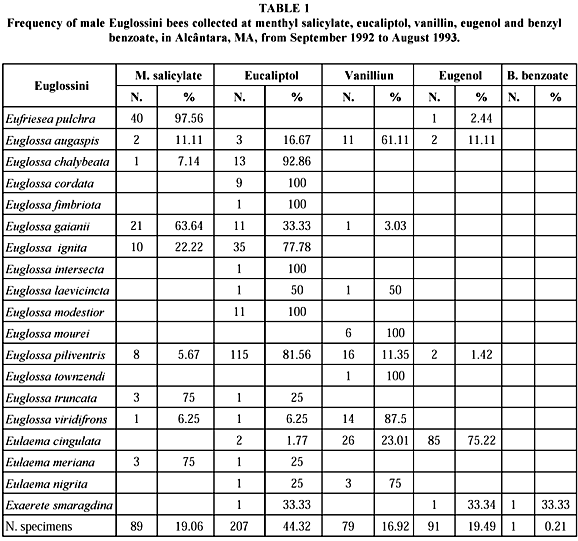From September, 92 to August, 93 bee sampling was done in a secondary forest near the Pepital River, in Alcântara, MA, in order to study the local Euglossini fauna. Five aromatic compounds were used: eucaliptol, eugenol, methyl salicylate, vanillin, and benzoate. Four hundred sixty-seven male Euglossini bees were captured, distributed in 4 genus and 19 species. Euglossa was the most abundant and with high diversity (302 specimens and 14 species), followed by Eulaema (121; 3), Eufriesea (41; 1), and Exaerete (3; 1). The species which more frequently visited the bait were Euglossa piliventris (141 specimens; 30.19%), Euglossa cingulata (113; 24.21%), Euglossa ignita (45; 9.64%), Eufriesea pulchra (41; 8.78%), and Euglossa gaianii (33; 7.07%) corresponding to 79.88% of the sampling universe. The bees were active throught the year, however during the rainy season more activity and diversity were observed. The most attractive essence was eucaliptol (44.32% specimens and 84.21% species). In spite of this study having been done in a forest fragment, a secondary vegetation area smaller than other areas studied in Maranhão, it showed a significant diversity rate. This result reinforces the importance of fragments in the conservation of local bee communities.
Euglossini; diversity; abundance; seasonality; chemical baits




